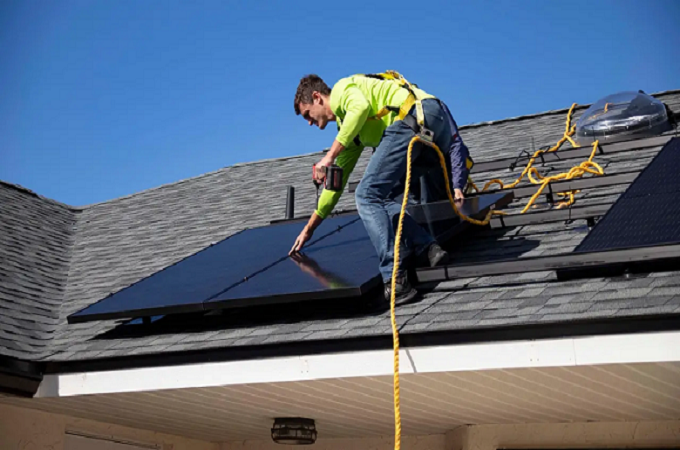Solar Cells are the foundation of any solar power system, but they can’t produce electricity on their own. They need an inverter to convert the direct current (DC) electricity they generate into alternating current (AC), the type of electricity used to power homes and businesses.
An inverter is a device that converts DC electricity into AC electricity. It does this by using a transformer, which is a device that increases or decreases the voltage of an electrical current.
The transformer in an inverter increases the voltage of the DC electricity from the solar cells to the level of the AC electricity used in homes and businesses.
Solar cells generate DC electricity, but most homes and businesses use AC electricity. This is because AC electricity is easier to transmit over long distances and can be used to power a wider range of devices.
Solar cells could not produce electricity directly usable to power homes and businesses without an inverter.
Types of Inverters
There are two main types of inverters: grid-tie inverters and off-grid inverters.
- Grid-tie inverters are connected to the electrical grid. They allow homeowners to use solar power to offset their electricity bills. When the solar panel system generates more electricity than the home uses, the excess electricity is sent back to the grid. When the solar panels are not generating enough electricity, the house draws electricity from the grid.
- Off-grid inverters are not connected to the electrical grid. They store the electricity generated by the solar panels in batteries. This allows homeowners to use solar power even when the sun is not shining.
Choosing an Inverter
When choosing an inverter, there are a few factors to consider, including the size of the solar power system, the type of inverter, and the features of the inverter.
The size of the solar power system determines the size of the inverter needed. A larger solar power system will require a larger inverter.
Let’s consider an example: Suppose you have a 5 kW solar power system consisting of 20 solar panels, each producing 250 watts. In this case, you would require an inverter with at least 5 kW capacity to handle the system’s total power output.
The size of the inverter should match or slightly exceed the maximum power output of the solar panels to ensure optimal performance and prevent overloading.
2. Grid-tie or off-grid
The type of inverter depends on whether the solar power system is connected to the electrical grid or not. Grid-tie inverters are required for solar power systems connected to the electrical grid.
Off-grid inverters are required for solar power systems not connected to the electrical grid.
The features of the inverter include the number of output circuits, the maximum power output, and the efficiency of the inverter. The number of output circuits determines how many devices can be powered by the inverter.
The maximum power output determines the amount of electricity that the inverter can produce.
The inverter’s efficiency determines how much of the electricity the solar panel system produces is used to power devices.
An inverter is an essential component of any solar power system. It converts the DC electricity generated by the solar cells into AC electricity, which can power homes and businesses.
There are two main types of inverters: grid-tie inverters and off-grid inverters. When choosing an inverter, consider the size of your solar power system, the type of inverter, and the features of the inverter.
Post time: Jun-16-2023

